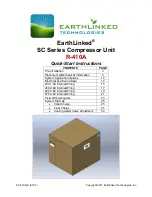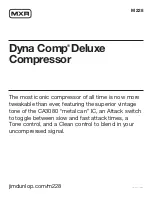
KNOW YOUR AIR COMPRESSOR
A. ELECTRIC
MOTOR:
The motor is used to power the pump. It is equipped with a thermal overload
protector and an automatic reset. If the motor overheats for any reason, the thermal overload protector
will shut it down in order to prevent the motor from being damaged. The motor will automatically restart
when it has cooled completely.
AIR COMPRESSOR PUMP:
The pump compresses the air and discharges it into the tank via the piston
that moves up and down in the cylinder
B. (ON/OFF) (aka PRESSURE SWITCH):
This switch turns the air compressor on and off. It is operated
manually, and when it is in the ON position, it allows the motor to start if the pressure in the air tank is
below the factory set ‘cut-in’ pressure, and allows the motor to stop if the pressure in the air tank reaches
the factory set ‘cut-out’ pressure. Be sure to set this switch to the OFF position when the air compressor is
not being used and before unplugging the air compressor.
C. AIR LINE OUTLET:
The outlet is connected to the 1/4” (6.4 mm) NPT air hose.
D. REGULATED PRESSURE GAUGE:
Display the current line pressure. It is regulated by the regulator
knobs.
E. TANK PRESSURE GAUGE:
Indicates tank pressure in PSI.
F. AIR PRESSURE REGULATOR:
A control that adjusts the line pressure to the proper amount needed to
operate spray guns and air tools.
Do not exceed the tool’s maximum working pressure.
G. PRESSURE RELIEF VALVE:
This valve is used to prevent system failure by draining pressure from the
system when it reaches a preset level if the pressure switch has not shut down the motor. It will pop open
automatically, or it can be activated manually by pulling the ring on the valve.
H. AIR TANK:
The tank is where the compressed air is stored.
I. AIR TANK DRAIN VALVE:
The drain valve is used to remove moisture from the air tank after the
compressor is shut off.
Do not attempt to open the drain valve when there is more than 10 PSI of air
pressure in the tank.
J. POWER
CORD:
This air compressor should be used on a nominal 115 V grounded circuit. Use a power
cord that is equipped with a grounding plug. Verify that the air compressor is plugged into an outlet that
has the same configuration as the plug (see Figure 1). Do not use an adaptor with this air compressor.
- 6 -































